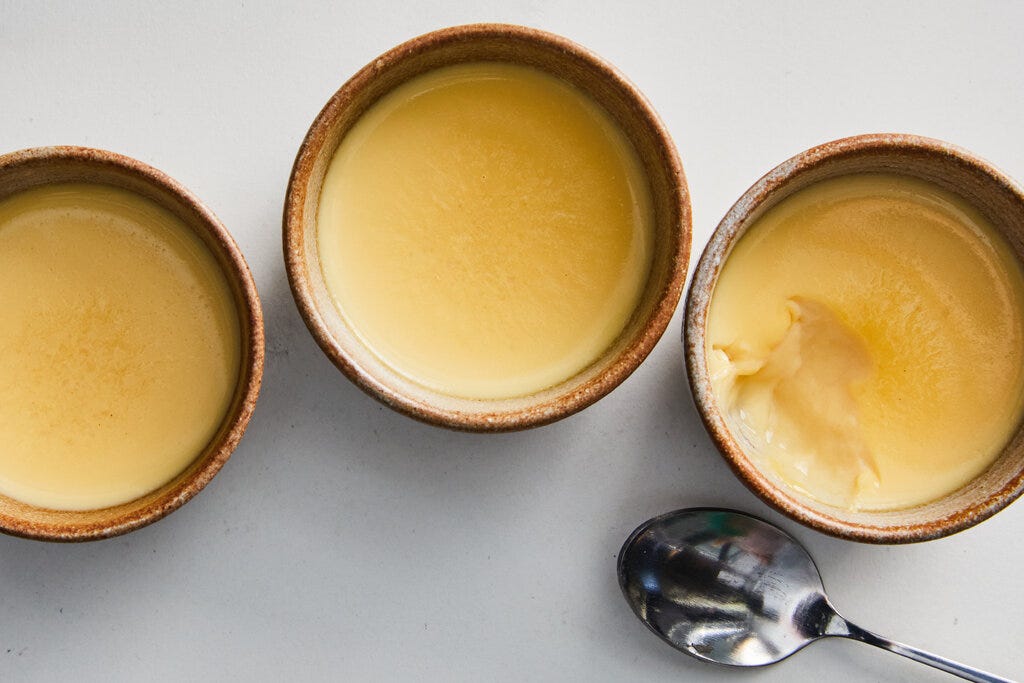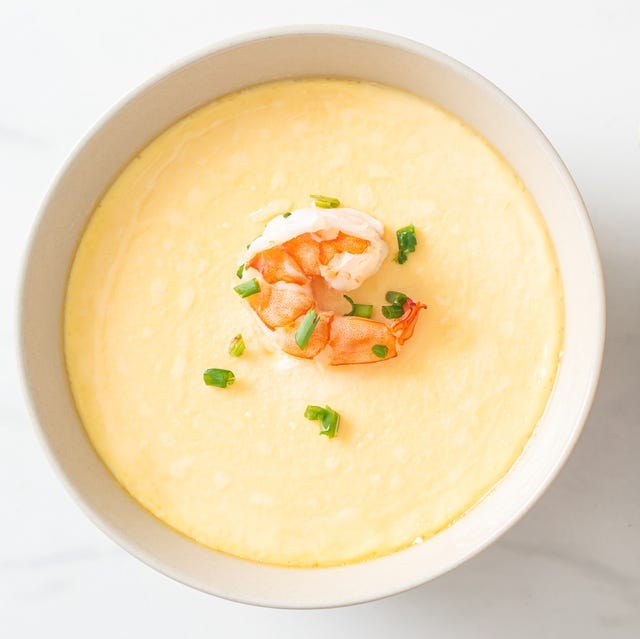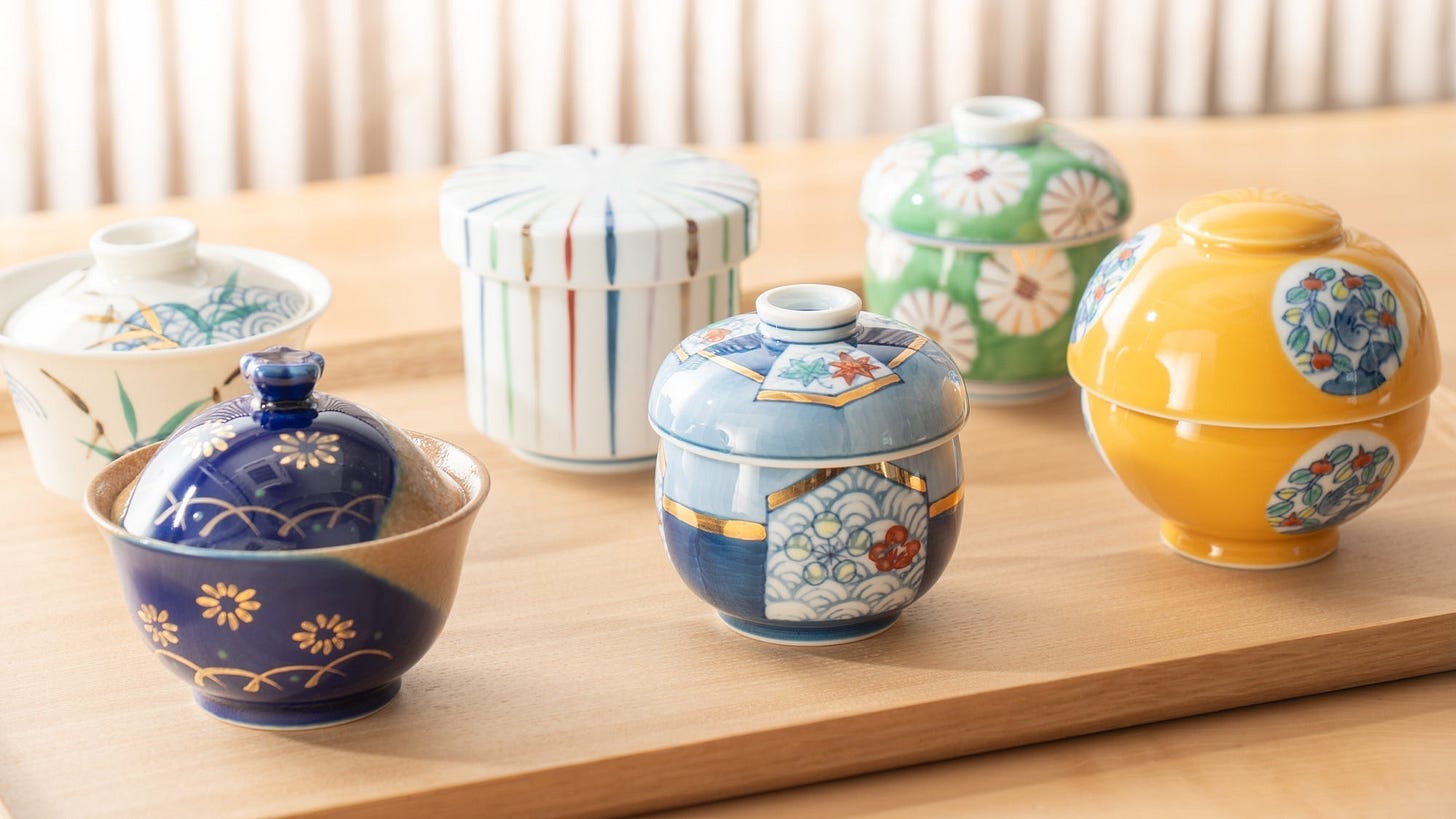Cooking an egg may be the first lesson for any aspiring chef. Fried, boiled, scrambled, poached. All valid methods. Each could contain hours of careful study. In this article I want to explore one of Japan’s favourite egg styles. A dish that echoes throughout Asia but never really pops up as a national cuisine. A dish known as chawanmushi.
Patented Chawanmushi! Old family recipe.
To be honest, the very first time I encountered chawanmushi, I thought it was just a Chinese steamed egg knockoff. Obviously the presentation of chawanmushi as below seems sort of Japanese thanks to the tea cups. Beside that though, the offer is an off-white, off-cream, slightly wobbly, mildly-salted, savoury egg custard in a round container.
Having grown up with another classical savoury Chinese style of egg mixed in water and steamed, (蒸蛋), see below, I started seeing similarities. It looked obvious to me that Japan tasted it, liked what they saw and slapped a Japanese name on it. Much like their previous attempts at Chinese cuisine, they weren’t fooling me.
Then I started having chawanmushi in more and more places. I began digging into their history. No surprises there, it was “inspired by China”. Yet it had travelled across the seas centuries prior, and not as some hot new fad.
Localised entirely within your country
The Japanese recipe seems to date from back in the Edo period around the late 1600s. Despite the closed nature of Japanese culture and food in that timeframe, the trading port of Nagasaki did what trading ports do and traded recipes. Chinese traders who were based in Japan tried recreating a taste of home.
Soon enough, Nagasaki-based Japanese folk tried the dish. The base recipe looks so easy, anyone could make it. It required eggs, water, a vessel to hold the eggs and water, and a heating element. On the tiers of cooking egg, steaming looks about one minor step more difficult than boiling. So the steamed egg begun its stay with Japan.
Then they tried to improve it. To fit with the Japanese palate, the recipes started adding Japanese ingredients. First the dashi. The mirin. These just changed the texture and flavour to a more silken style that has that still-undefined umami taste.
More got added. The teacup style became the vessel of choice. In fact, a specific chawanmushi cup/bowl was developed. These are single serving ceramic vehicles that ensure an even steam with a lid to keep in the moisture. Some fancier households and venues even have specific seasonal artistry with each cup, to provide that additional design element.
Seasonal items were added. Regional items were added. Depending on when and where, you could have shrimp, abalone, chicken or even edamame or vegetables hiding at the bottom. The ingredients depended on if it was at this time of year, at this time of day, or even in this part of the country.
The resulting dish has meant that every chawanmushi has its own unique surprises. Whatever seasonal local produce existed would potentially appear as a tiny treat hidden amongst the silky egg crowd. To me, this was the central item that elevated it into the comfort food status. Beyond the warming and smooth egg, there was the hint of a slight twist to close out the dish. A skilled chawanmushi eater or chef could almost use this to indicate when and where the meal was happening.
It’s an Albany Eggspression
The dish almost meant it was a secret language being a teaser for the rest of the meal. It could tell you that it’s summer in Kagoshima or winter in Hokkaido. This has given it a favoured spot in the kaiseki courses. The fancy fine dining multi-course tradition uses chawanmushi as the simple palate reset that also fits into the whole seasonal and local aesthetic across the entire meal. Chawanmushi serves its role as the transition that never gets lost amongst the fresh seafood and premium wagyu in any great kaiseki.
From high dining to weeknight family dinners, chawanmushi has a place at the table. While the high end kaiseki joints probably have a multi day preparation list on this dish, the essence of chawanmushi is still simplicity. All you need is egg, water, dashi, and mirin. Other ingredients as you see fit! There are recommended proportions, but just mix those and steam for about 5 minutes. Do it to your own taste. If that still seems too hard, there are instant chawanmushi packets where the instructions are, just add egg and microwave for 2 minutes. I don’t know if it still counts as steamed, but it seems to fit within the chawanmushi legacy. So while I cannot claim that this is identical to the kaiseki experience, I’m sure it is faster!
This is the easiest way to have chawanmushi. The best way would probably still be a home cooked meal that uses seasonal ingredients. Of course, I can’t talk about recommended locations without mentioning the original in Nagasaki, Yossou. Laying claim to being the same restaurant from 1866, this 6th generation family store is as close to tasting the first version that you can find. While the premises are almost brand new, having been moved to in 1927, there is a way to experience the old-world chawanmushi prepared by experts.
All this to say: try the steamed eggs. You can try that home cooked, microwaved, or part of fine dining. You could travel to China, Korea or local Chinese and Korean restaurants for alternative steamed eggs. You could learn more about Japanese eggs and yolk colours, you could try raising your own chickens, you could just try them here and there. You could try them in a house, with a mouse…
I hope at the end of all this you might go, “I like steamed eggs and ham!”









Never had these but sound incredibly tasty!
I’m always interested in your origin stories of the dishes, thanks!